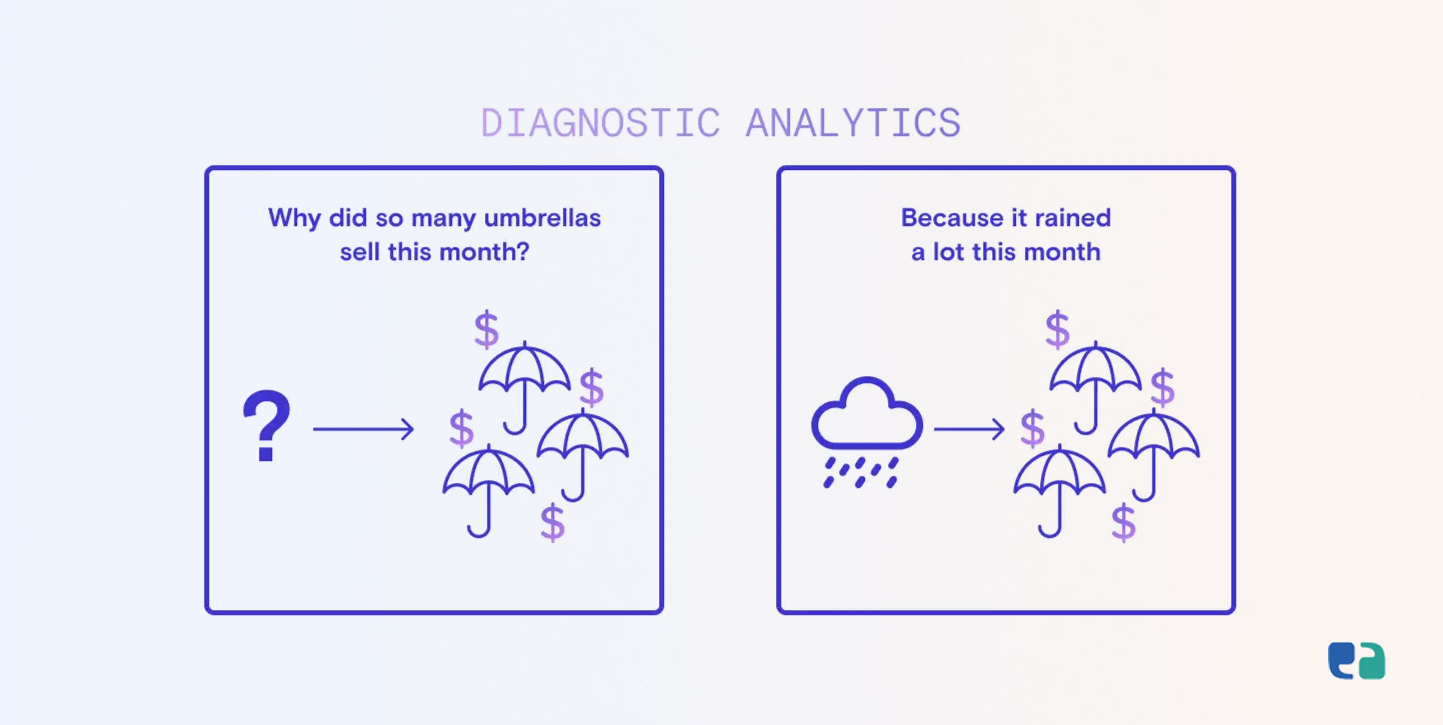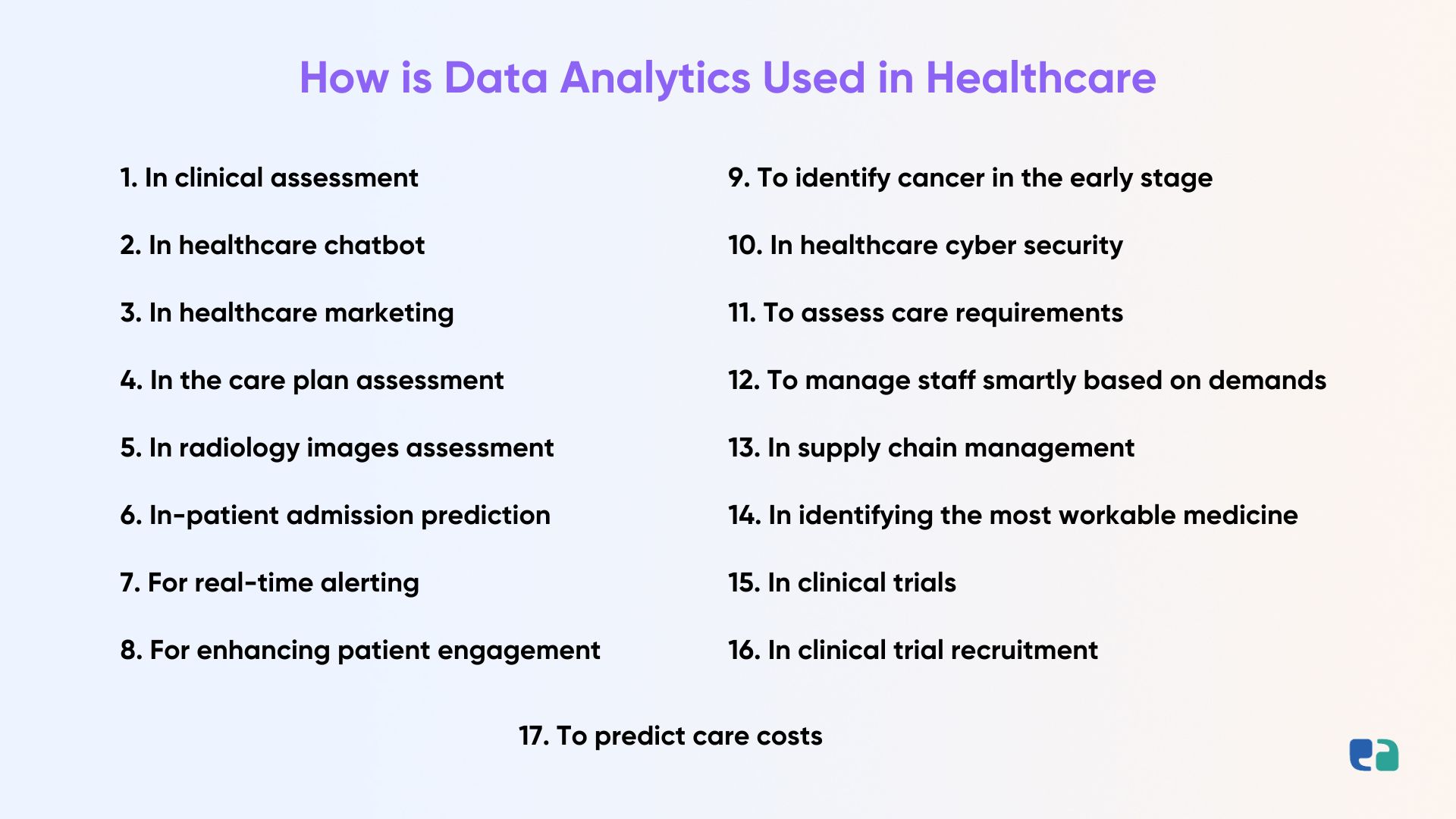Leverage Diagnostic Analytics to Improve Healthcare Outcomes & Operational Efficiency

2 months ago
Whenever we get a chance to talk with healthcare organizations, they always have one constant complaint…
Cost, cost, and cost.
And they are not lying. Managing a healthcare facility brings lots of added costs to them.
But the surprising point is that most of the cost comes from inefficient systems that they are using.
They don’t have enough information about their own working structure and how they could use it efficiently.
This inefficient structure in their workflow causes costs they shouldn't even have to bear.
And this is happening across the country.
But if they utilized advanced tools like diagnostic analytics, they could save $23 billion annually!
Isn't it amazing?
This tool empowers hospitals to make faster, more accurate decisions by analyzing patient data.
Hospitals can stay updated in care and reduce their costs.
Information is power, and you can see it here.
What is Diagnostic Analytics in Healthcare?

Fixing a problem is not always the best solution, as the problem can occur again.
But if you know the root of the problem and work there, that problem will never occur.
This is the work of diagnostic analysis.
If you take an example of descriptive analytics, it tells you what happened, but diagnostic analytics tells you why it happened.
But it's not an easy task.
It involves making sense of data through careful analysis rather than just having proof.
However, you can't undermine descriptive analytics. "What happened?" is the first step toward "Why did it happen?"
After knowing the "why," you can then move on to prescriptive analytics to decide what to do next.

Major Uses of Diagnostic Analytics in Healthcare: Top Examples
Look at the most popular examples of diagnostic analytics in healthcare.
1. Identifying Patient Readmission Risks
Diagnostic analytics can spot patients who are at high risk of readmission.
With the help of past admissions, they can forecast insights which help in creating better follow-up plans for patient health.
2. Optimizing Treatment Plans
It empowers providers to decide which treatment works best for the patient. The tool helps doctors to create tailored treatment to the patient.
3. Monitoring Chronic Conditions
For the treatment of chronic diseases, timely intervention is needed.
Tools like diagnostic analytics provide real-time data that help catch complications early for diseases like diabetes.
4. Enhancing Operational Efficiency
Hospitals analyze patient flow data to identify bottlenecks. This leads to smoother operations and shorter wait times.
5. Disease Outbreak Prediction
If you have historical data, you can predict future disease outbreaks with the help of diagnostic analytics.
It helps in taking quick action and preventing the spread of illness.
6. Quality Improvement Initiatives
Hospitals look at patient feedback to find areas for improvement. These tools help improve care quality and increase satisfaction.

The Impact of AI on Healthcare Diagnostics
AI is revolutionizing every industry, and diagnostic analytics is no exception.
If you look around, the USA healthcare system is saving $150 billion each year by using AI applications.
One popular application is AI chatbots.
These simple-to-use chatbots allow you to send a text and get answers in a blink.
But the internal process of these chatbots is not easy. They process a large amount of health data to provide answers.
In the training of these chatbots, a large amount of data is fed into the model.
This helps them identify diseases, symptoms, and available treatments. When patients interact with these chatbots, they can get information right away.
We all know how busy doctors are. They don’t have sufficient time to deal with every patient one-on-one for every case.
In this situation, chatbots can help. If needed, the chatbot can refer the patient to a nurse or suggest they see a doctor.
If a physician is not updated with the latest research or current medical information, these chatbots provide the information in an easy-to-understand format.
For both patients and doctors, AI diagnostic analytics systems are a blessing.
The Roadmap to Implementing Diagnostic Analytics in Practice
Due to fancy words like chatbots and AI, the implementation of a diagnostic analytics system might feel overwhelming. But it's not as difficult. See how you can incorporate this into your system.
Step 1: Assess Current Data Infrastructure
Start by looking at your hospital's existing data systems, like Electronic Health Records (EHRs) and diagnostic tools.
Step 2: Choose the Right Diagnostic Analytics Platform
By the way, there are numerous diagnostic analytics solutions in the market. But it's not necessary that every one fits your requirements.
So we would recommend building a custom AI-powered analytics solution.
You can collaborate with a health-tech company like SyS Creations (based in Burlington, Canada), who can understand your unique needs and provide you with a PIPEDA or HIPAA-compliant solution.
Step 3: Train Your Team
It's important to train doctors and administrative staff on how to use analytics effectively.
Step 4: Pilot the Program
Start small, then roll on gradually.
You can start with a small pilot program in one department or for a specific use case, such as chronic disease management, and then expand to cover all the associated parts.
- Tip: Keep updating and improving your analytics tools to ensure you’re always on the cutting edge of innovation.
By following these four steps, you can effectively implement diagnostic analytics into your practice and enhance the quality of care at your hospital!

Major Challenges in the Implementation of Diagnostic Analytics
If you're planning to incorporate Diagnostic Analytics in your hospital, there are a few challenges you may encounter. Let's see how you can overcome them.
1. Data Integration Issues
It's a tedious task to gather information from different EHRs and diagnostic devices and put them in one place.
Here, you would need a centralized data platform.
This way, you can combine all the data and analyze it better.
Working with tech experts can help you with that.

2. Staff Resistance
It's natural that your staff may feel threatened by the use of AI or diagnostic systems.
But it's your responsibility to train them and explain how it can lead to better efficiency in their work and more ROI.
3. Cost Concerns
Cost is the first concern when we talk about any digital solution, and it's obvious to have.
But the important thing is to look at the benefits you're getting and the ROI.
With such advanced tools, you won't just improve patient care but also reduce readmission rates, cut costs, and increase your ROI.
Get your free consultation for an accurate cost and ROI analysis.
Why Should You Partner with a Health-tech Provider for Your Solution?
Partnering with a health-tech provider can make a big difference when implementing diagnostic analytics into your practice. Here’s why:
1. Expertise
Less hassle, fewer disruptions, and a robust system.
Health-tech experts have years of experience working with tech solutions, especially when it comes to AI.
They don’t just build the solution for you but also make sure that these solutions integrate smoothly with existing systems.
2. Customization
If you choose any SaaS solution or third-party software, you can't get a customized solution.
But if you partner with a tech provider, they will build a customized solution for you—a solution that perfectly fits your healthcare needs.
3. Ongoing Support
A healthy system needs constant monitoring and support. A good health-tech partner doesn't leave when the solution is developed but continues providing post-service support for uninterrupted care.
By collobrating with a health-tech vendor, your hospital can maximize the benefits of diagnostic analytics and improve patient care!
Future of Diagnostic Analytics: 7 Key Tech Trends
With each passing day, new technology is coming and needs to be incorporated into the existing system. Here are 7 technological trends that every healthcare system is incorporating, and you can also include them in your practice.
1. Artificial Intelligence (AI)
- Improves patient data analysis
- Enables faster diagnoses
- Allows personalized treatment plans through machine learning
2. Big Data Analytics
- Allows hospitals to process vast amounts of information
- Reveals insights that improve patient care
- Boosts operational efficiency
3. Telemedicine Integration
- Provides a comprehensive view of patient health
- Aids informed decision-making
- Enables remote monitoring
4. Real-Time Data Processing
- Enables swift decisions based on the latest patient data
- Leads to timely interventions
- Results in better outcomes
5. Predictive Analytics
- Forecasts patient trends
- Identifies potential health risks
- Implements preventive measures
6. Cloud Computing
- Cloud solutions offer scalability and flexibility
- Reduce costs
- Enhance data accessibility
7. Internet of Things (IoT)
IoT devices provide real-time health data from patients, supporting more personalized care.

